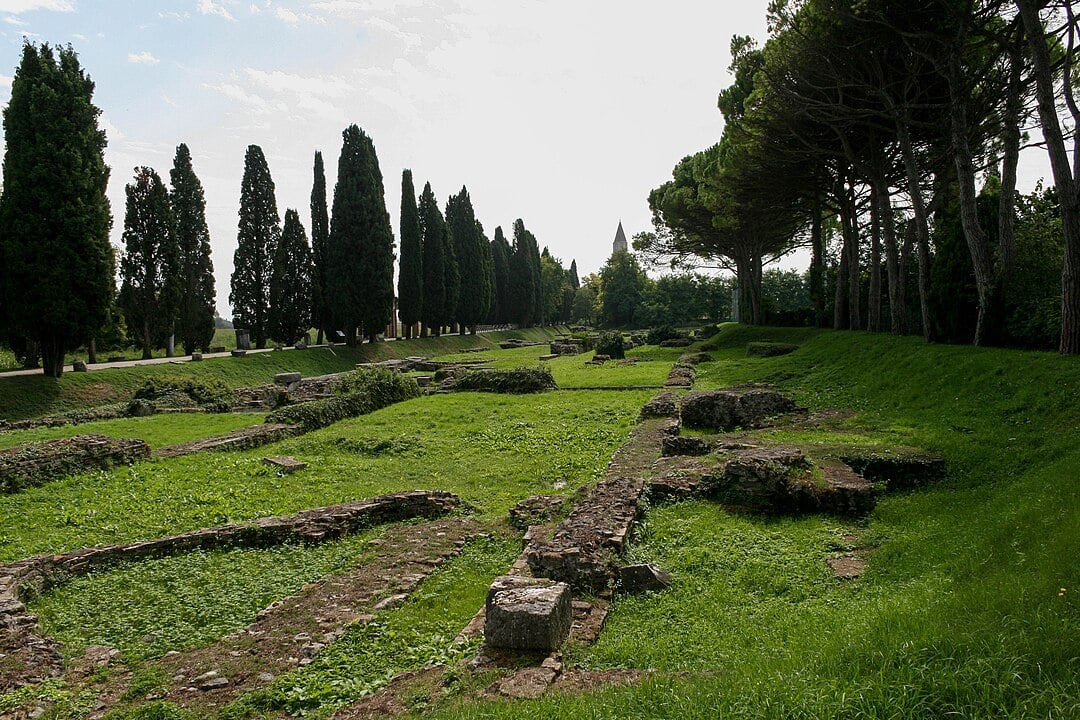
Archaeologists in Italy have uncovered rare gold treasures and evidence of a once-bustling Roman river port during excavations at the ancient city of Aquileia in Italy. The discoveries reveal new details about the city’s commercial strength and its links to imperial Rome.
Three gold coins discovered
The finds were made at the Fondo ex Pasqualis site on Aquileia’s southeastern edge, where excavations exposed part of a vast marketplace dating from the first to fourth centuries A.D. Beneath the paving stones of a portico, researchers found three gold coins bearing the names of Emperors Valens, Magnus Maximus, and Arcadius.
Each coin represents a different denomination and is considered exceptionally rare. Experts say they were not meant for daily circulation but were likely imperial gifts presented to members of the court. The coins appear to have been hidden during a time of danger and never retrieved. Their recovery highlights Aquileia’s connection to the imperial world and its prominence in the late Roman period.
Traces of a lost river port
Beneath the market complex, archaeologists found materials dating to the late first century A.D., including 19 amphorae, added to 23 discovered in 2024. The containers were embedded in the ground to form a drainage and stabilization system under a long, narrow room supported by stone pillars.
The layout points to one or more storage areas linked to a riverside quay. The findings suggest that Aquileia’s southern sector once stood along a much wider river that handled cargo arriving by water. Researchers believe this part of the city served as a key landing point for goods, underscoring its importance as a Roman trade center.
A road through the marketplace
Excavations also exposed a cobbled street running between two large market buildings. Wheel ruts carved into the stones show that carts once moved through the area, carrying supplies and merchandise.
The marketplace itself includes six large buildings that store and sell foodstuffs such as cereals, meat, vegetables, and fruit. In the western portico’s collapse zone, archaeologists recovered large quantities of charred cereal grains. These remains will help specialists better understand ancient food production and daily life in the city.
Layers of history
After the market’s destruction, the area continued to be used. Excavations revealed small dwellings with hearths, workshops, and a later road built over the earlier one. Several burials without grave goods were also found, now undergoing radiocarbon (C14) analysis for dating.
From discovery to public heritage
The Fondazione Aquileia, which supports the excavation, described the discoveries as “precious finds” that will help expand future visitor routes through the ancient site. Foundation president Roberto Corciulo and director Cristiano Tiussi said the newly uncovered cobbled street could, with proper conservation, become part of a walking path showcasing the marketplace and its river connections.

